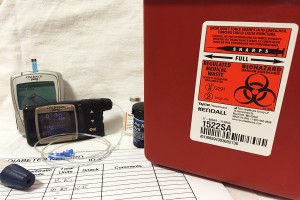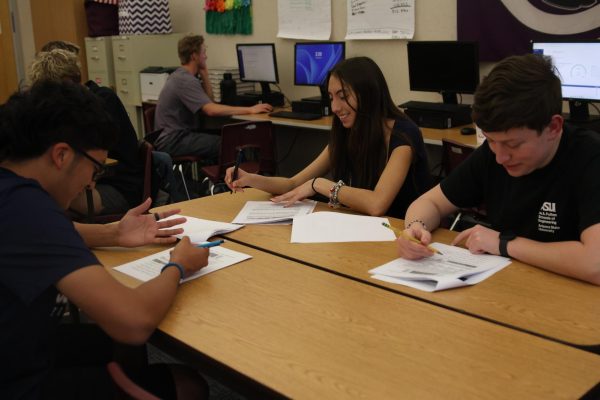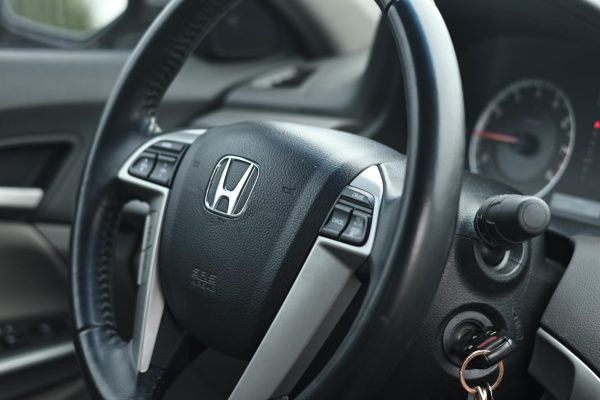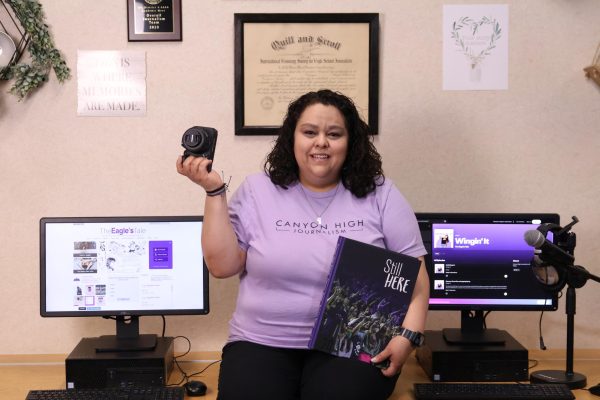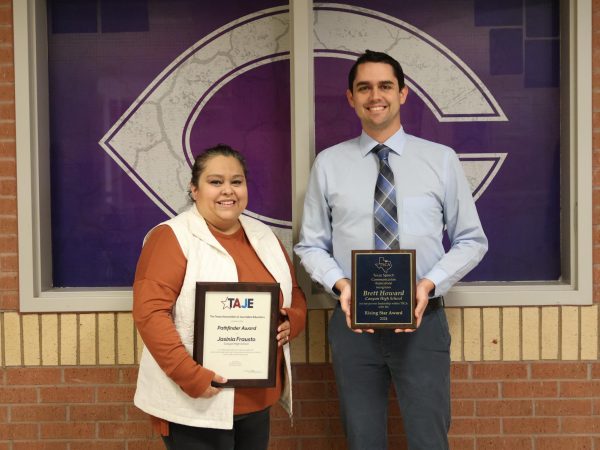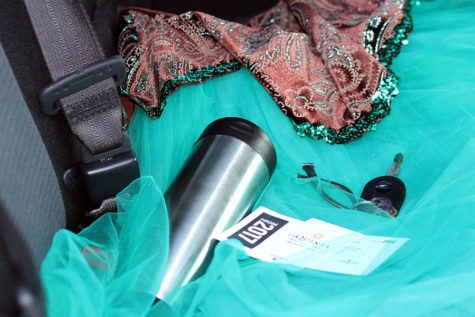Students share struggle with Type 1 diabetes
Junior Evan Walton checks his blood sugar with a home blood glucose meter. His blood sugar reads “266,” which is higher than the average.
He started to hallucinate, his legs cramping as he dry heaved. The ambulance rushed to him, one of his organs shutting down. The diagnosis changed his life.
Diabetes is a disease that affects 29 million Americans. Type 2 is the most common, in which the body cannot use insulin properly, but can be prevented. Type 1, however, cannot be prevented and occurs when the body does not produce enough insulin, affecting people of all ages. Junior Evan Walton was diagnosed with Type 1 diabetes at the age of 13.
“I had a bad allergy reaction, so I just stayed home,” Walton said. “That night, my legs had started cramping up. I got really dehydrated. I would go to the bathroom every 10-15 minutes. I would be dry heaving. I kind of started hallucinating, so my mom called the clinic here in Canyon. But, they called the ambulance, and I ended up in BSA. They checked my blood sugar, and it was over 1,000, and the normal is not over 120 or 130.”
Freshman Hollie Velasquez was diagnosed with Type 1 diabetes when she was 7 years old.
“I was seven and I was going to the bathroom a lot, and drinking a lot of water,” Velasquez said. “My teacher noticed, too. My mom thought I was lazy or something, because she didn’t know what it was. So she took me to the hospital.”
Walton said it took several days for the news of his diagnosis to set in.
“It was stressful knowing my life had been changed,” Walton said. “I remember day three or day four in the hospital, and I had just broken down about it. It was stressful. Now, I do well. It’s a lot easier now that I’ve got the whole thing down.”
Before he was able to check his insulin regularly with ease, Walton said he was worried about his health.
“Before, I was worried about not checking my blood sugar often enough, or not getting enough insulin or calculating it right,” Walton said. “When you do insulin shots, you have to do the math to get your insulin right. Now that I have a pump, it’s a lot easier, because it does all that math for you.”
Velasquez also uses a pump to keep her diabetes under control.
“A lot of people ask questions about it,” Velasquez said. “They think it’s a camera or something.”
Walton said Type 1 diabetes can affect anyone.
“It’s when the pancreas shuts down,” Walton said. “So you can get it when you’re born, or when you’re 13 like I was, or when you’re an adult, like my uncle who was diagnosed when he was in his 50s.”
Certain signs could indicate diabetes and should be checked.
“If you start guzzling water, and you’re not diabetic and you’re just drinking water bottle after bottle and going to the bathroom constantly, I’d say go to the hospital,” Walton said. “Watch out for weight loss, too. I had jeans that fit me perfectly, and then they didn’t fit at all. They were way too big. I lost 26 pounds when I was in the hospital. Not a recommended weight loss plan. I’d say if you’re seeing any of that, go to the hospital or call the doctor. It probably could be diabetes, because that’s a lot of the tell-tale signs of it.”
Diabetics have many additional requirements to ensure there blood sugar remains under control, such as having to pack an extra bag while traveling. Walton said to have patience with diabetics for this fact.
“Understand that, if we’re sitting down not doing anything or staring off into space, we’re not just staring off into space,” Walton said. “Chances are we’re having low blood sugar, and we really don’t want to move. Or we’re having high blood sugar. It works either way.”
Walton said to watch a diabetic if they show certain signs of high or low blood sugar.
“If their face is pale, if you can tell they’re shaky, get them a soda or candy, because they’re having low blood sugar,” Walton said. “And it can’t be a diet soda. If they are breathing hard and not really with it, that’s probably high blood sugar, and the best you can do is give them water and have them exercise a little bit and have them do insulin. That’s the best you can do.”
Walton said it is important to keep diabetics in mind.
“It’s good for people to stay with the person, be checking up on them and make sure that they’re okay,” Walton said. “I personally like that, because I feel like people care for my health. I feel like a lot of other people are that way.”
Even with just a simple question, Walton said to check on those with diabetes daily.
“It’s a lot to deal with,” Walton said. “Sometimes they might have forgotten to check their blood sugar. So ask them, ‘Hey, did you check your sugar today?’ ‘Oh, I forgot.’ You might remind them, possibly preventing a major event from happening because they didn’t know what their blood sugar was. For other diabetics, just stay with it, because it’ll work its self out. It gets easier.”
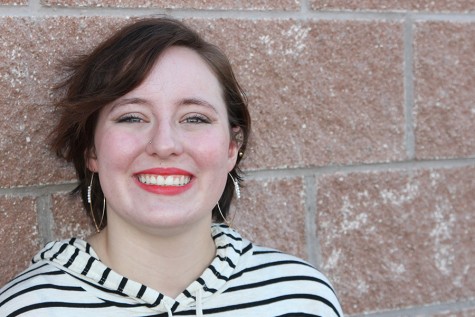
Hola! My name is Avery Cummings, and I am the Co-Editor-in-Chief this year. This is my third year on our amazing staff. In what little free time I have, I play the guitar and piano, and play with my dogs (who do not like each other). I love lipstick and...


